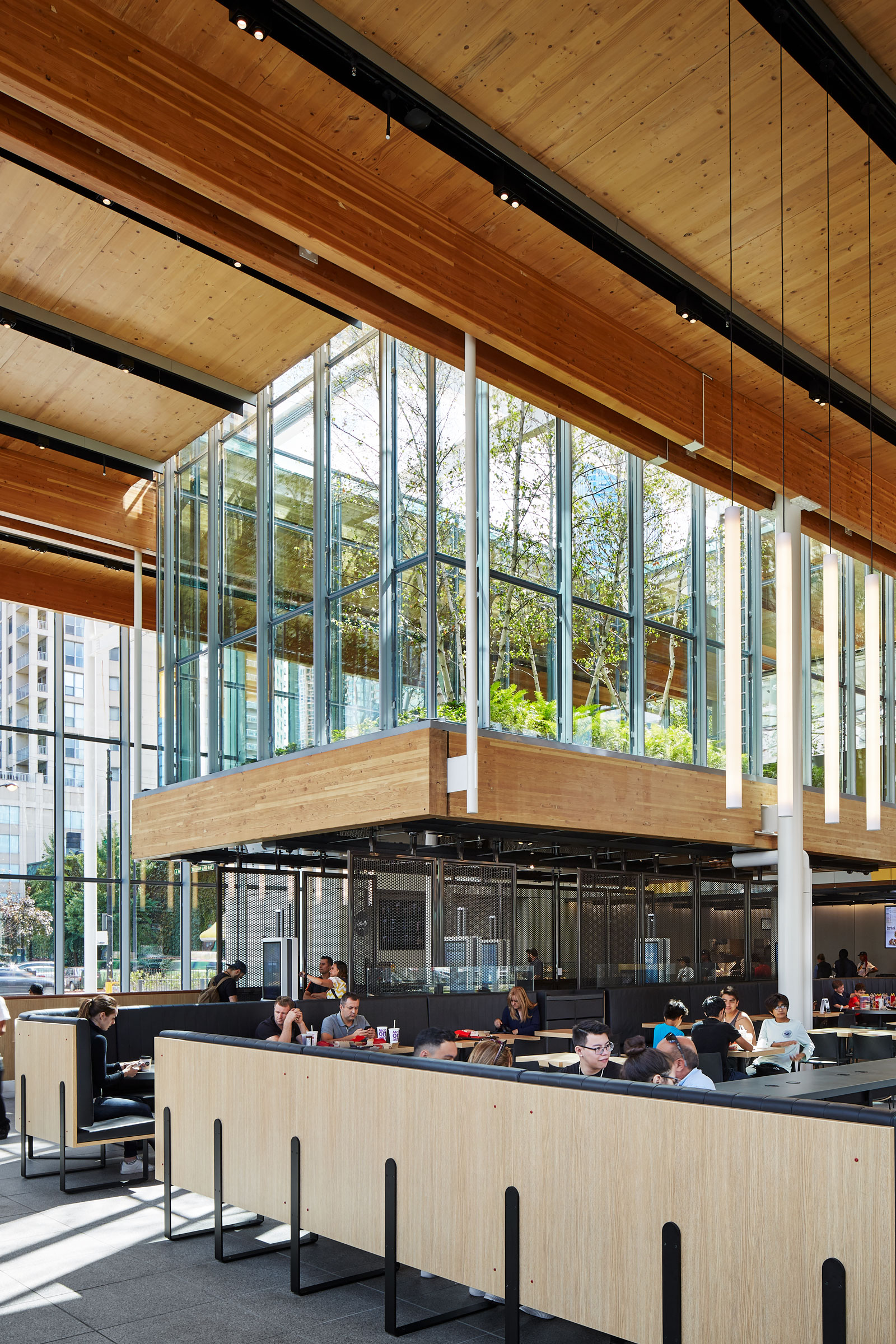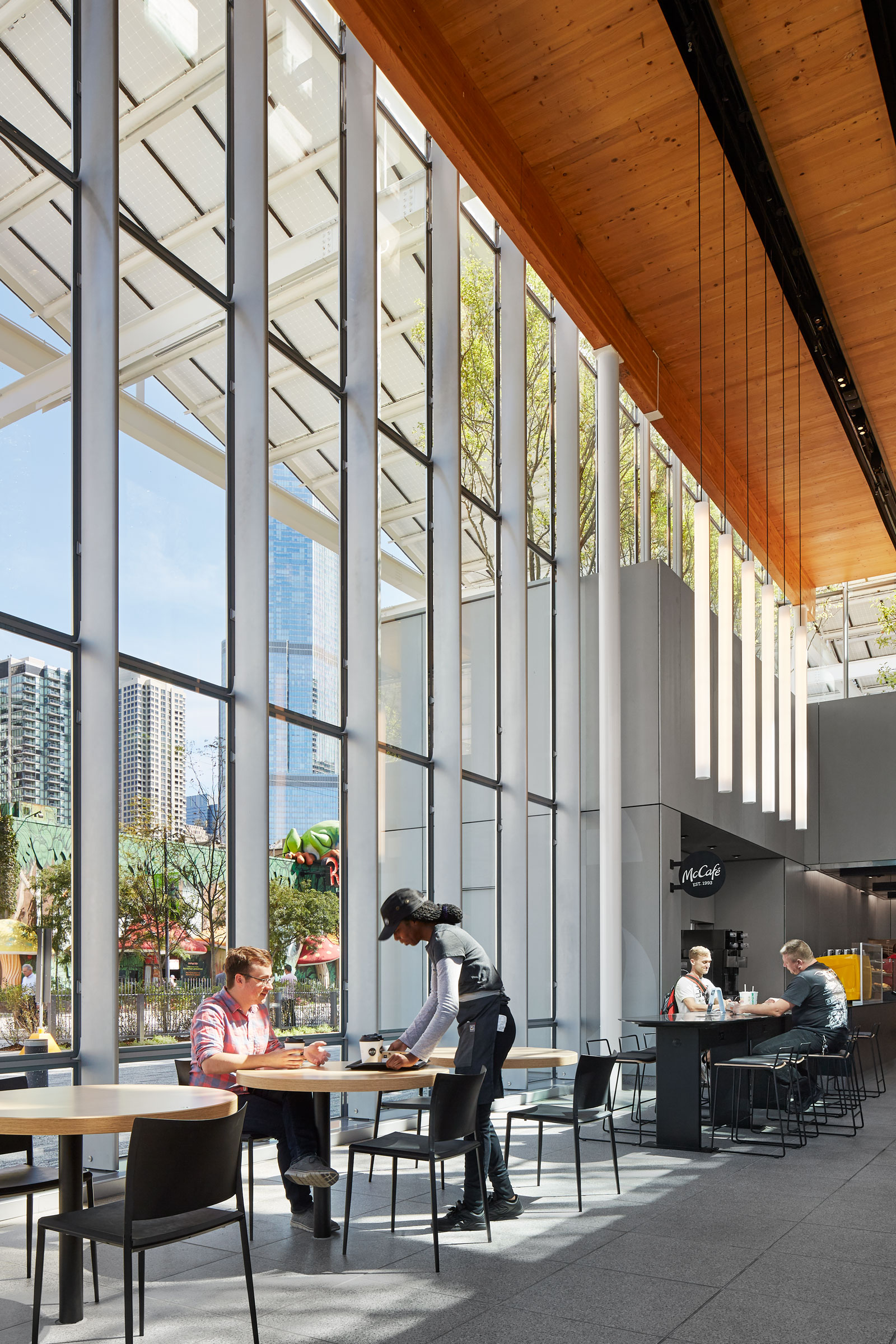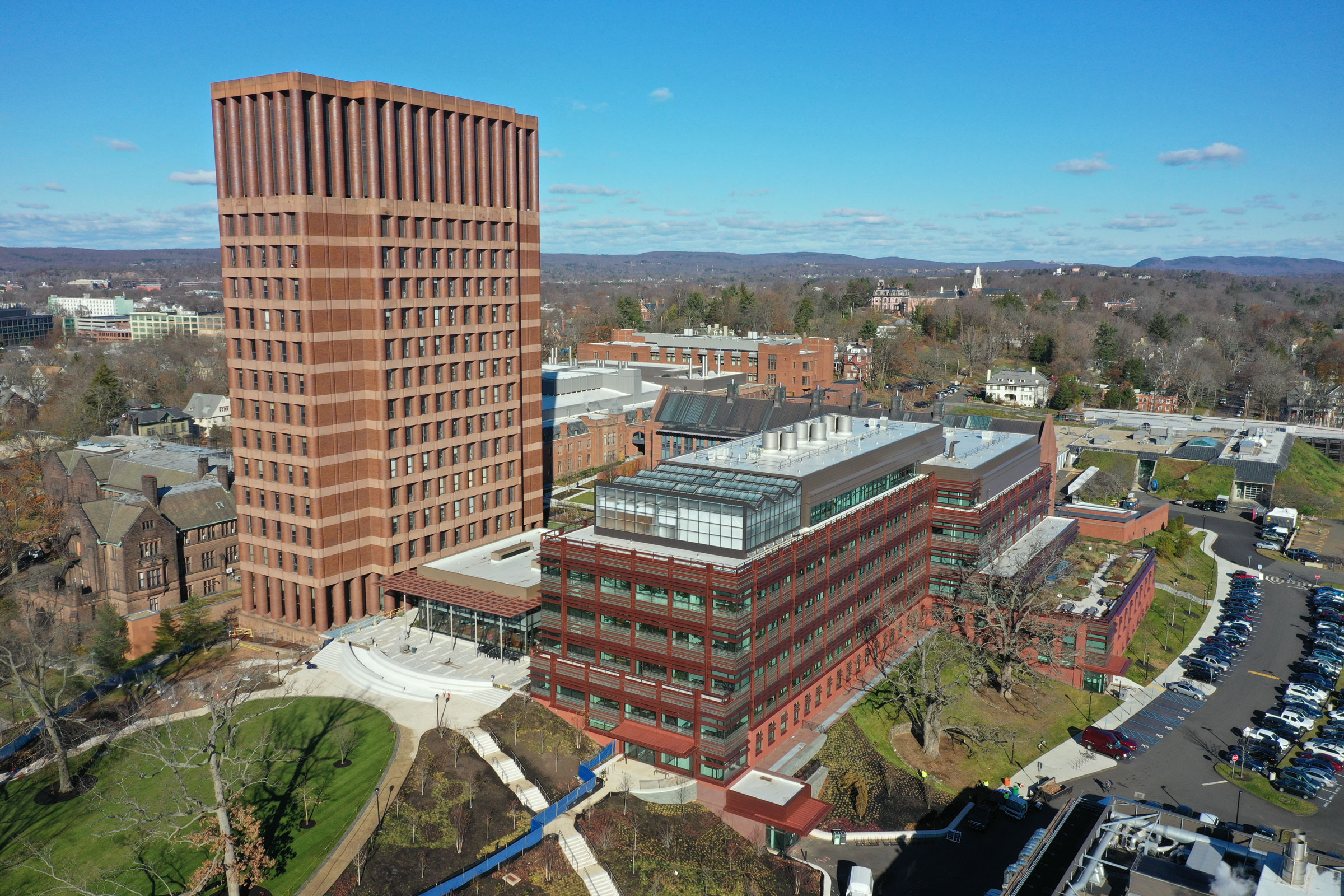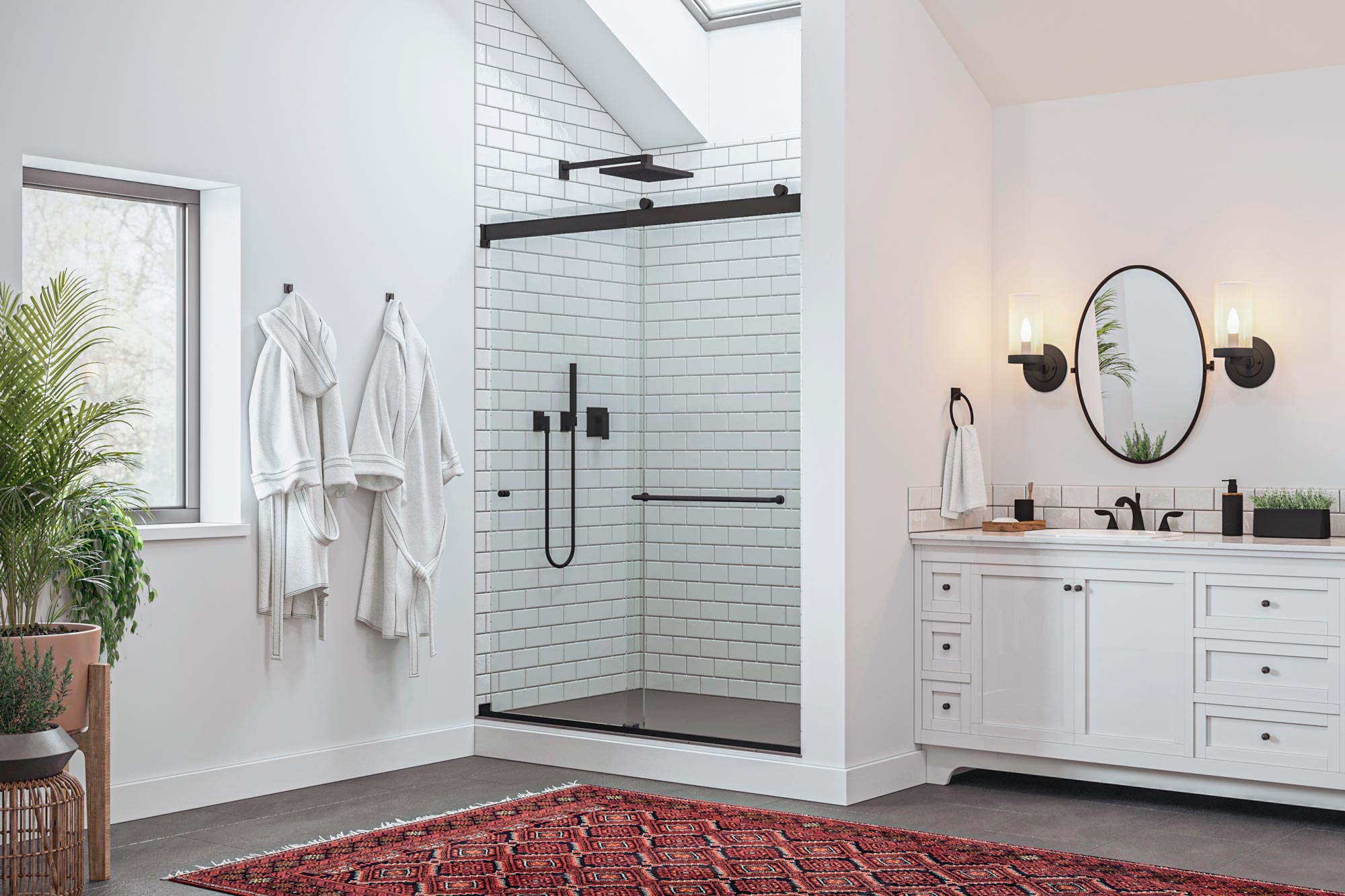Story at a glance:
- Ross Barney Architects combined sustainability and urbanism for the fast-food giant.
- The two flagship restaurants are located in Chicago and at Walt Disney World Resort in Florida.
- Carol Ross Barney, founder and design principal of Ross Barney Architects, founded her firm in 1981.
When McDonald’s came to Ross Barney Architects to design their new Chicago Flagship restaurant, they really didn’t talk about sustainability at all—they just wanted a refresh of the building. We started doing the research for the design and found that one of their corporate values is sustainability, but centered more on their supply chain and not on buildings. Because of this corporate commitment we suggested that we design the most sustainable restaurant and achieved a LEED Platinum–certified restaurant.
Chicago Flagship
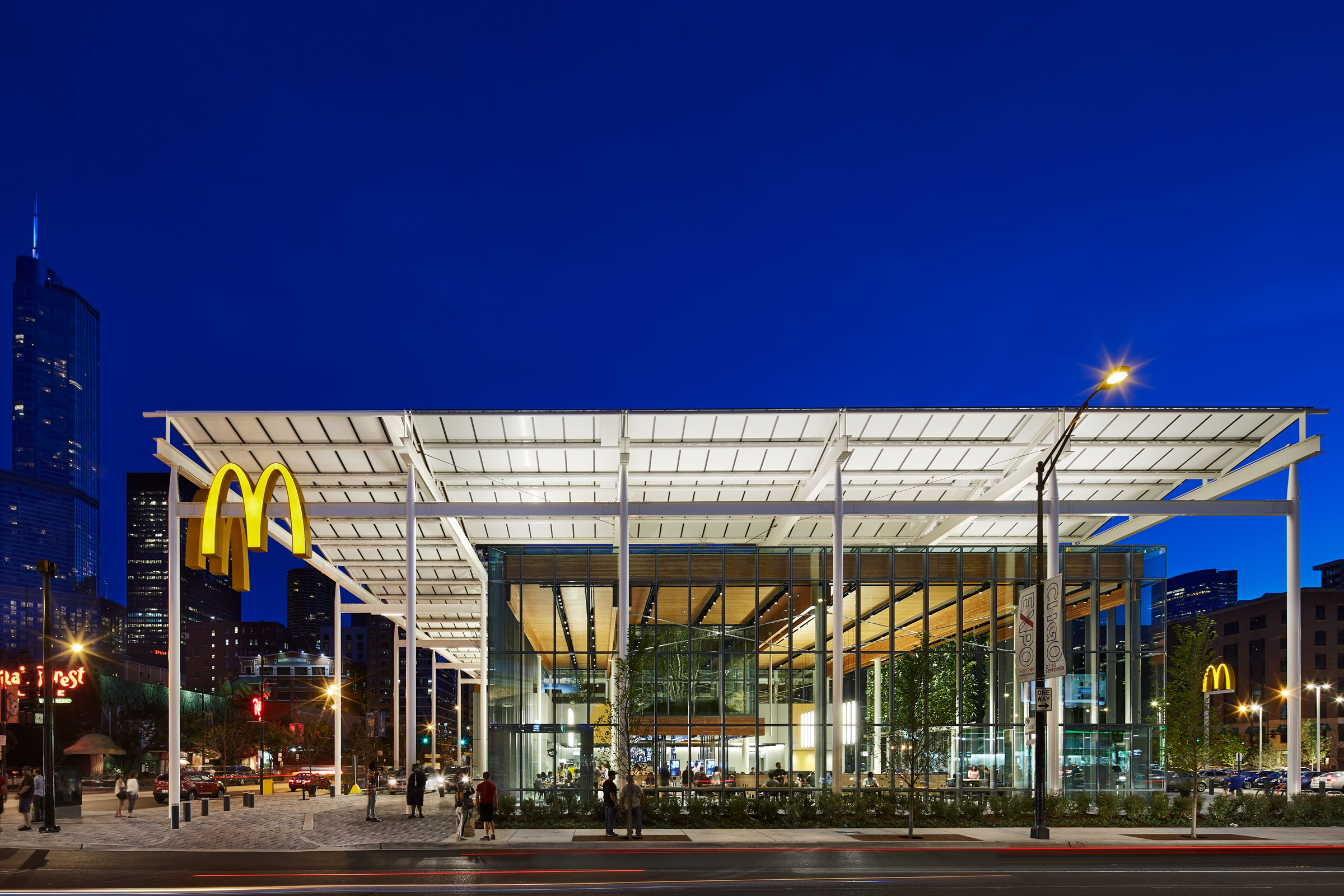
McDonald’s flagship restaurant in Chicago was designed by Ross Barney Architects. Photo by Kendall McCaugherty, Hall+Merrick Photographers
McDonald’s asked us to work with them on the new Chicago flagship restaurant because they were concerned about making an amenity for the city. The site is unusual—a full block in River North—and they were concerned about the public space that it would have and wanted to be a good citizen in their hometown. They also said that “sustainability was their everyday business and that notion was very attractive,” combining sustainability and urbanism.
The new Chicago Flagship celebrates the pure simplicity and enduring authenticity of McDonald’s, welcoming both residents and visitors to a sophisticated yet informal gathering place in the heart of the city.
Project Credits
Name: Chicago Flagship
Location: Chicago
Completion: 2018
Size: 19,420 square feet
Architect & Landscape Architect: Ross Barney Architects
Interior Design and Ray Concept: Landini Associates
Structural Engineer: Goodfriend Magruder Structures
Green Wall & Green Roof Design: Omni Ecosystems
Mechanical & Plumbing Engineer: WCW Engineers
Electrical Engineer: Dickerson Electrical Engineers
Lighting Design: Schuler Shook
Lighting Design: Day and Night Solar
Civil Engineer: Watermark Engineering
Contractor: Walter Daniels Construction
Green Space
The site is just steps from Michigan Avenue, occupied since 1983 by the iconic “Rock ’n’ Roll McDonalds” that emphasized drive-through services. The new design rebalances car-pedestrian traffic, creating a city oasis where people can eat, drink, and meet.
Green space is expanded by more than 400%, producing a new park-like amenity for a dense area of Chicago. Surrounding the restaurant is a park with an outdoor dining space and permeable pavement, topped with a solar pergola to provide shade and feed energy back into the building and to the grid.
We felt that the sustainable aspects of the building had to tell a story—that if it was instructive, people would be more aware of their environment and would want to preserve and protect it. The green roofs are planted with harvestable trees and native plants. The rooftop orchard contains Honeycrisp and Gala apple trees ranging from 8 to 9 feet tall as well as edible plants, including arugula, broccoli, and carrots—all living within the orchard’s canopy. This food from the rooftop is harvested each fall.
Sustainability Mission in Design
- Photo by Kendall McCaugherty, Hall+Merrick Photographers
- Photo by Kendall McCaugherty, Hall+Merrick Photographers
McDonald’s corporate commitment to sustainability is at the core of the new restaurant design. The structural system cross-laminated timber (CLT) is the first commercial use in Chicago and has a lighter environmental footprint than concrete and steel. The solar pergola captures the sun’s energy, supplying part of the building’s consumption needs. Throughout the site, permeable paving is used to reduce stormwater runoff and the heat island effect. The building is designed to achieve LEED certification.
The customer experience upon entering to ordering and enjoying a meal is enhanced by sustainable design features all around, including an outside roof garden planted with ferns and white birch trees that is experienced inside a floating glass terrarium inside and above the dining room. This vantage provides guests an experience of viewing and feeling the landscape above and outside the restaurant.
Inside, tapestries of living plants improve indoor air quality and provide a backdrop of green. This 792-square-foot living tapestry is a functional visual amenity, improving indoor air quality, dampening noise, and increasing psychological comfort for employees and customers.
Resource-Efficient
McDonald’s aims to have the most resource-efficient restaurants possible, using the minimum amounts of energy and water and maximizing the use of renewable energy and resource-efficient features.
A generous solar pergola made up of 1,062 panels generates approximately 60% of the building’s electrical energy used in a year. This canopy visually unites the restaurant into a single volume, and beneath this “big roof” indoor dining areas, contained in a pure glass box, are seamlessly connected to outdoor spaces. The new kitchen reuses the footprint and structure of the previous store and comprises a second concrete clad box.
The carbon saved by using a CLT and Glulam structure instead of a non-wood structure is equal to removing more than 34,000 passenger vehicles from the road for one year.
While one-of-a-kind, the McDonald’s Chicago Flagship is generating valuable lessons that can be scaled, impacting communities around the world.
Walt Disney World Resort
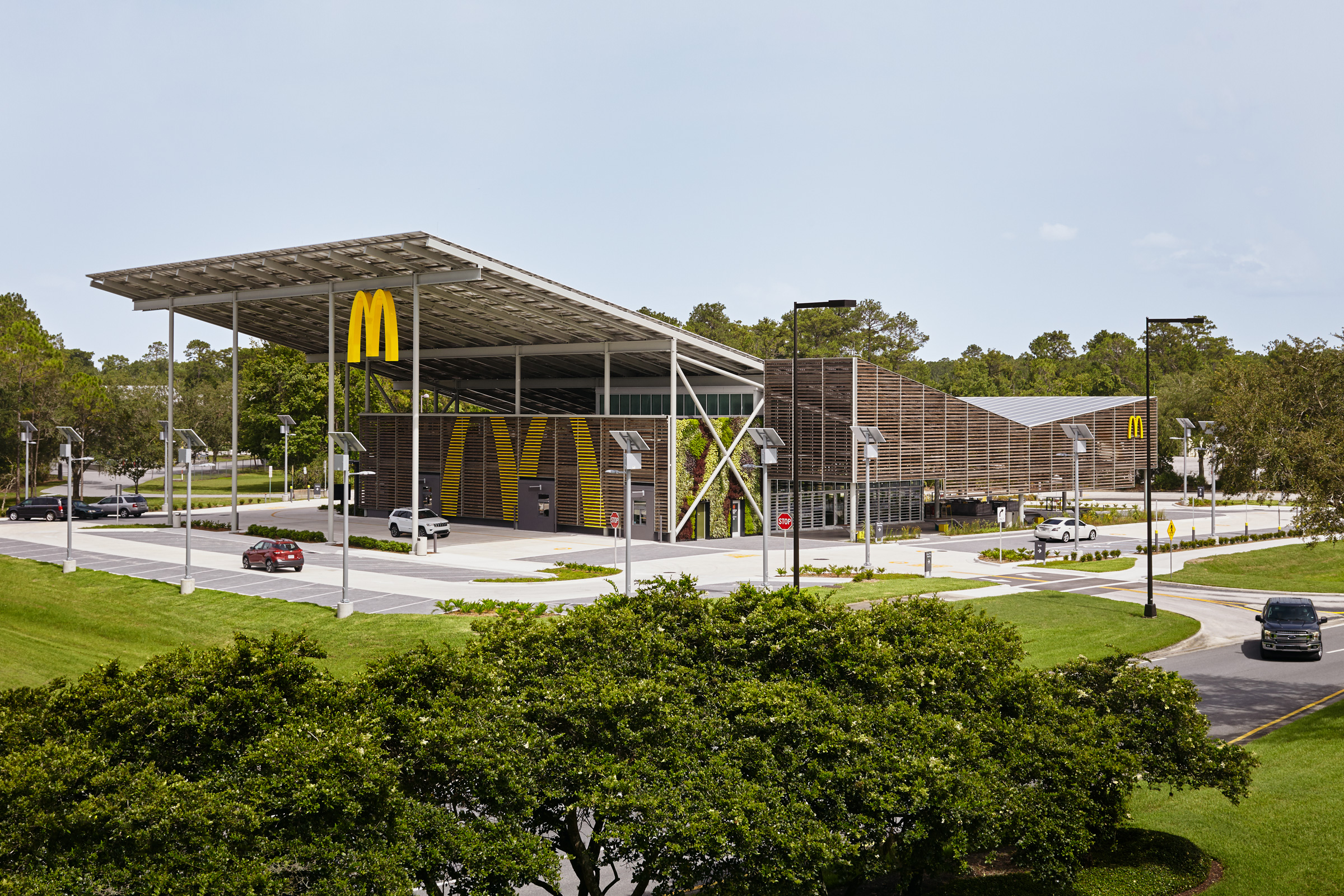
Inside the Walt Disney World Resort McDonald’s flagship restaurant you’ll find 27-foot ceilings and sustainable building materials. Photo by Kate Joyce Studios
When McDonald’s approached us again to help them design their new flagship at Florida’s Walt Disney World Resort, the challenge was to take an all-out sustainable approach and design a net zero energy building certified by the International Living Future Institute. The Disney Flagship aims to become the first net zero energy, quick-service restaurant and represents McDonald’s commitment to building a better future through “scale for good.”
Incorporating visible and impactful symbols of change, the restaurant arranges architecture and technology to firmly place itself in the future. Like the Chicago project, we began with an assessment of the existing building and ended up reusing and incorporated as much as we could from the existing building.
Project Credits
Name: Walt Disney World Resort Flagship
Location: Orlando
Completion: 2020
Size: 8,024 square feet
Architect & Landscape Architect: Ross Barney Architects
Collaborating Architect & Landscape Architect: CPH
Engineer of Record: CPH
Structural Engineer: Goodfriend Magruder Structures
MEP Engineer: WSP
Lighting Design: Schuler Shook
General Contractor: Southland Construction
Saving Energy
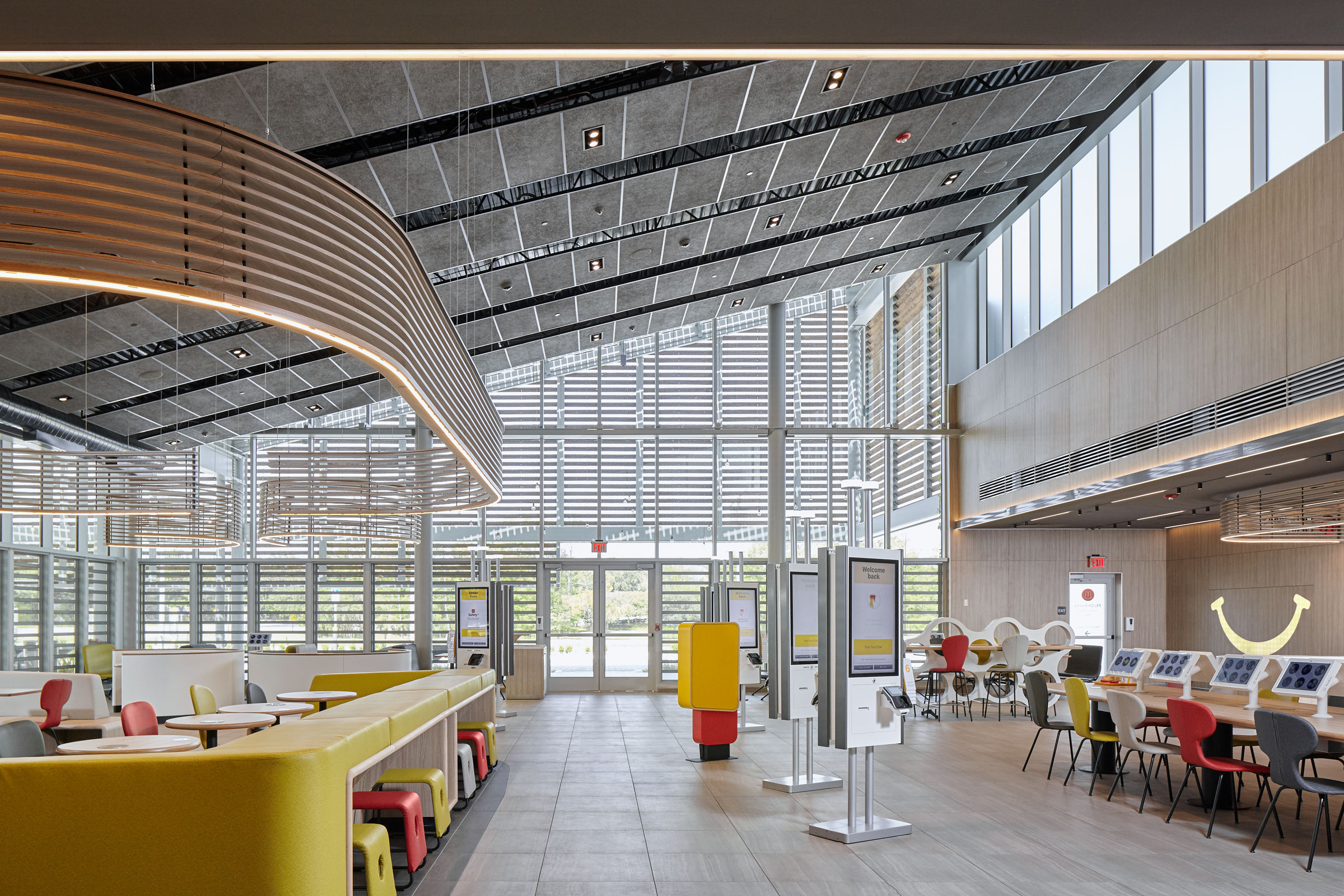
Photo by Kate Joyce Studios
Quick-serve restaurants tend to be energy hogs—we needed to generate at least as much energy on-site from renewable sources as the building uses—so the team had to cut consumption significantly, which very much influenced the design.
We designed the building to consume 35% less than baseline, or 666,454 kWh/year. We did this by optimizing kitchen equipment, which carries the biggest loads. We designed a canopy with 18,700 square feet of standard photovoltaic solar panels and 5,000 square feet of BIPVs over an outdoor eating porch. The restaurant is a sustainable and healthy response to the Florida climate.
Taking advantage of the humid subtropical climate, the building is naturally ventilated for about 65% of the time. Jalousie windows operated by outdoor humidity and temperature sensors close automatically when air conditioning is required. An outdoor “porch” features wood louvered walls and fans to create an extension of the indoor dining room.
Green Design Strategies
Additional sustainable strategies include paving materials that reduce the urban heat island effect, previous surfaces that redirect rainwater, 1,766 square feet of living green wall that increases biodiversity, new LED lighting, and low-flow plumbing fixtures.
A robust education strategy was also a goal of the project. The architecture itself becomes a narrative tool in addition to interior graphics, interactive video content, and gaming that is unique to this location. The restaurant teaches visitors of all ages to be more dedicated environmental stewards.
With design, you are constantly asking for clients’ trust as you lead them into unfamiliar territory. That’s not always comfortable, especially if you’re in the role of safeguarding a global brand like McDonald’s. They have been our partner in design of these two new forward-looking, sustainable flagship restaurants that we think are champions of environmental stewardship.



